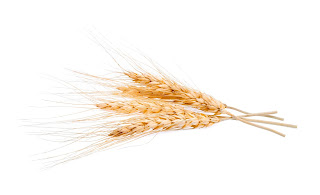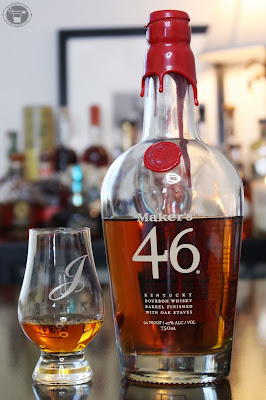Smooth Ambler Contradiction
Chefs have been doing it for ages; counter-intuitively adding
contrary ingredients to enhance the overall flavor of a dish.
Salted caramel being the obvious and most universally
digestible example of a seeming flavor contradiction working delicately
together to create a more delicious treat.
In the same vein, Smooth Ambler Contradiction is a tasty example
of two distinct whiskey flavors blended together in a manner that – defying reason
– delivers a more complex and delectable whiskey than either of its two primary
sources alone could yield.
It is a blend of two decidedly different bourbons; a super young
wheat-forward bourbon (a scant 2 years old and a mashbill containing 20% wheat)
and a nicely aged/sourced rye-forward bourbon (9 years old and a mashbill
containing 21% rye.) Both whiskies in the blend are properly bourbon, with 60% and 72% corn in their
respective mashbills, but the secondary grain in both is wildly different – as is
their time in the barrel.
Wheat forward bourbons (not to be confused with wheated
whiskey or “wheaters” – more on those in an upcoming post) tend to have notes
of its principal secondary parental grain: wheat. If you’ve ever opened a fresh
box of Wheat Thins, open a box right now in your mind, and try to remember and
hold that specific slightly sweet toasted wheat grain note in your olfactory
memory… If you get this note when you sip a whiskey, more likely than not, you’ve
got either a proper wheat whiskey in your hand or a wheat-forward bourbon like
Maker’s Mark. Wheat-forward spirits tend to be defined as “grainy” or “grassy,”
they are often described as “smooth.”
Young whiskey tends to also have a strong or “sharp” attack
and lacks both the volume of sugars extracted from charred barrels (time, after
all is a necessary ingredient) and smoothness that comes from a long rest and
myriad interaction between the grain alcohol and the wood of the barrel. Needless
to say, you can assume a 2 year old wheat-forward bourbon is going to be sharp,
and more wheat-sweet than wood/sugar sweet.
Rye forward bourbons (not to be confused with rye whiskey)
have the distinctive characteristics of the rye grain, mellowed out by the majority
corn in the mashbill. Rye tends to be described as “spicy” or “fruity” compared
to its wheated cousins. While the wheat-forward whiskeys tend to be classified
as “smooth,” high-rye bourbons tend to be designated as “bold.”
While I’m sure there are a few mad scientist mixologists out
there right now making cocktails out of equal parts rye whiskey and wheat
whiskey, most of us have never seen an Old Fashioned, Manhattan, Sazerac or Julep
with a blend. One wants the spice of rye, sweet of bourbon or smooth of wheat… or he doesn’t, right? It’d be even more
bizarre to see someone order two disparate whiskies neat – and pour them into
the same glass. It shouldn’t work. It doesn’t work. No one does that…
And yet…
Enter Contradiction.
Contraction is about 2/3 the older high-rye bourbon, and
just 1/3 the quite young high-wheat bourbon. Smooth Ambler gives the blend 3
months to age in their original barrels, which doesn’t sound like much but they’ve
stumbled onto a true alchemy. Any more or less aging could’ve sent this balance
out of alignment. Together, these two sing in a wonderfully irrational harmony.
Like salt on caramel or lemon juice in barbeque sauce, the younger
more aggressive spirit cuts through the more aged-refined juice, delivering a
layer of complexity to each sip.
So… what does it taste like?
Taking the lead, the nose is mostly the rye-forward bourbon,
with notes of the rye itself, baking spice and fruit. The next dance steps are on the palate, where
the younger bourbon takes the spotlight. The wheat grain flavor sits on the
tongue, with hints of honey, vanilla and corn. It’s a bit thin as you’d expect
a younger spirit, but just as one begins to make up his or her mind about the
bottle… the high-rye bourbon reclaims center stage. The finish is all rye. Aged
oak, rich dark sugars, and those baking spices come back with a vengeance. The flavors
linger long and strong, and yet you’ll notice you only really “get” the high-rye
bourbon, which is somehow “more rye” than some proper rye whiskies, thanks to
the paradoxically contradictory flavor juxtaposition of the young high-wheat
spirit in the mix. It’s a neat magic trick, Smooth Ambler.
It’s also a delicious and relatively easy to find bottle,
which I fully recommend.
Cane@whiskeytolife.com





Comments
Post a Comment